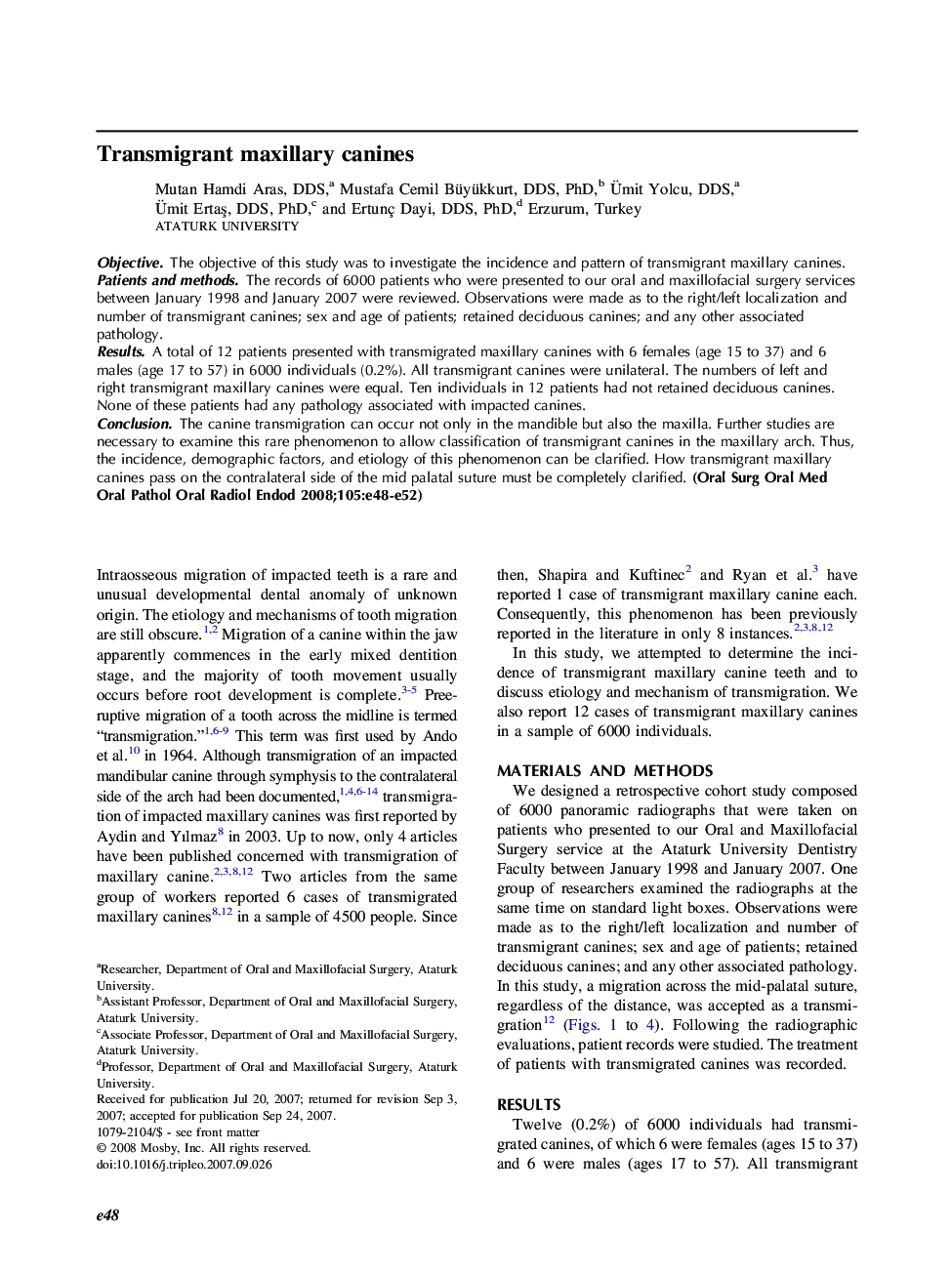| Article ID | Journal | Published Year | Pages | File Type |
|---|---|---|---|---|
| 3169026 | Oral Surgery, Oral Medicine, Oral Pathology, Oral Radiology, and Endodontology | 2008 | 5 Pages |
ObjectiveThe objective of this study was to investigate the incidence and pattern of transmigrant maxillary canines.Patients and methodsThe records of 6000 patients who were presented to our oral and maxillofacial surgery services between January 1998 and January 2007 were reviewed. Observations were made as to the right/left localization and number of transmigrant canines; sex and age of patients; retained deciduous canines; and any other associated pathology.ResultsA total of 12 patients presented with transmigrated maxillary canines with 6 females (age 15 to 37) and 6 males (age 17 to 57) in 6000 individuals (0.2%). All transmigrant canines were unilateral. The numbers of left and right transmigrant maxillary canines were equal. Ten individuals in 12 patients had not retained deciduous canines. None of these patients had any pathology associated with impacted canines.ConclusionThe canine transmigration can occur not only in the mandible but also the maxilla. Further studies are necessary to examine this rare phenomenon to allow classification of transmigrant canines in the maxillary arch. Thus, the incidence, demographic factors, and etiology of this phenomenon can be clarified. How transmigrant maxillary canines pass on the contralateral side of the mid palatal suture must be completely clarified.
